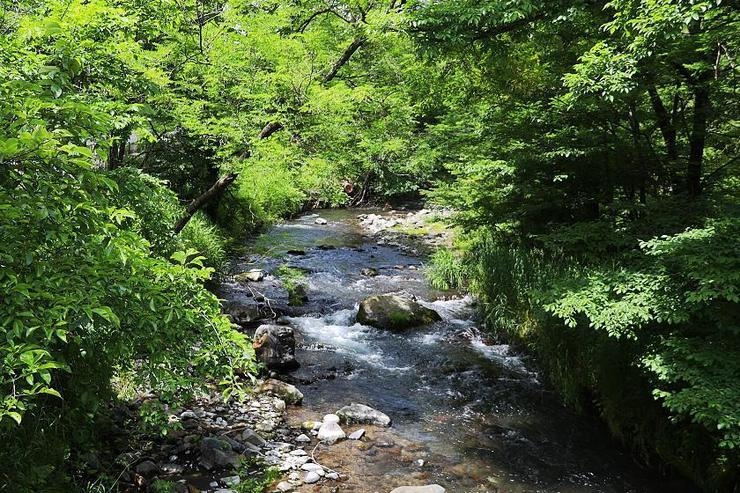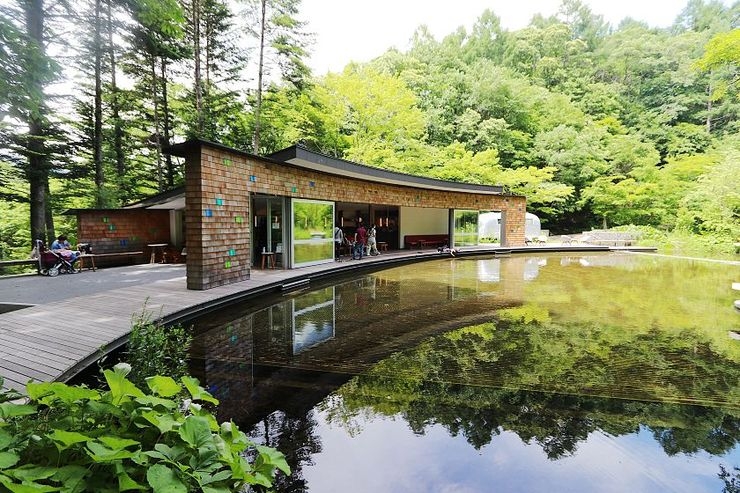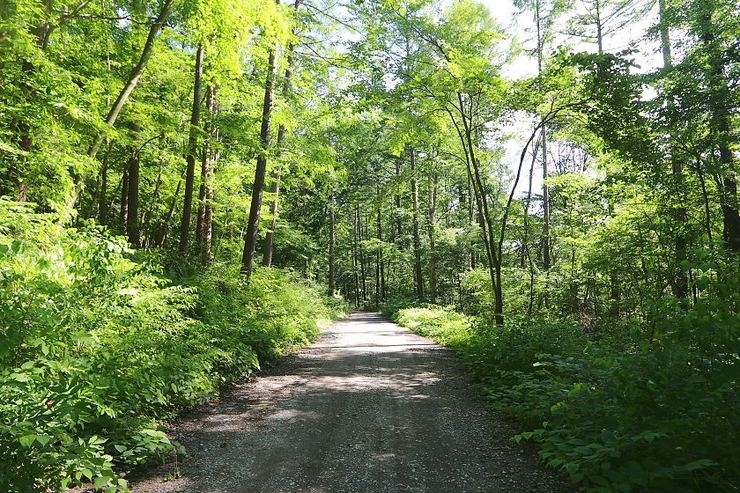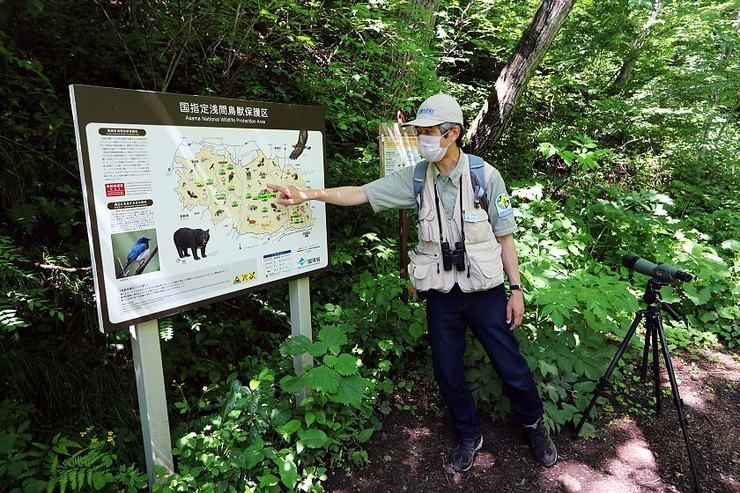
Our guide, Otsuka-san, describes some of the local species
My first tour began in the early afternoon and lasted a little over ninety minutes, taking us on a loose circuit of woodland paths as our guide highlighted all sorts of points of interest, allowing us to see, hear, touch and even smell traces of wildlife around us.
Amongst the trees and thick undergrowth, we encountered a wide range of plantlife starting with the tsurifuneso (touch-me-not), whose green leaves hide delicate pods that explode in a puff of tiny seeds when touched to protect them from caterpillars. We also found mulberry trees whose sticky, sweet black fruit are a popular source of food with local animals, and sansho (mountain pepper), whose little pods have a sharp, citrusy bite and are commonly used in eel dishes and yakitori.
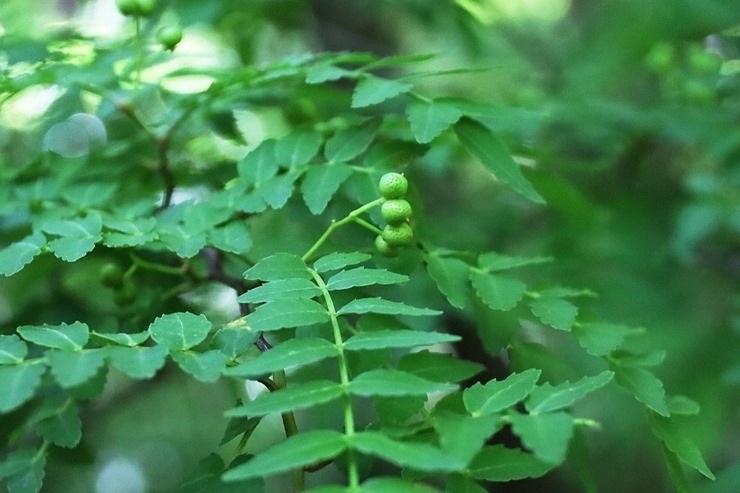
sansho (mountain pepper) leaves and pods
Signs of insect life could be found everywhere, from weird and wonderful caterpillars to alarmingly large ants. Producing a light net, our guide was able to expertly catch first a large dragonfly, then a green-veined white butterfly that we soon discovered smelled strongly of lemongrass. Hidden in the leafy undergrowth we also found leaves, stripped and rolled into tiny cylinders by weevils to cocoon their eggs.

A caterpillar hangs from a leaf
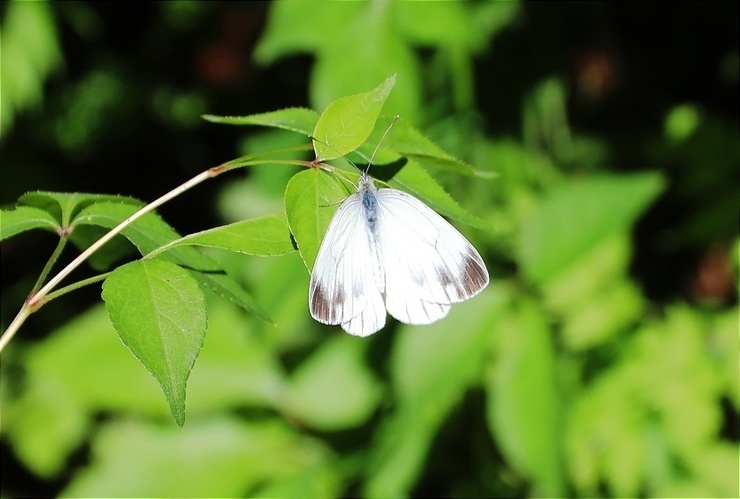
A green-veined white butterfly
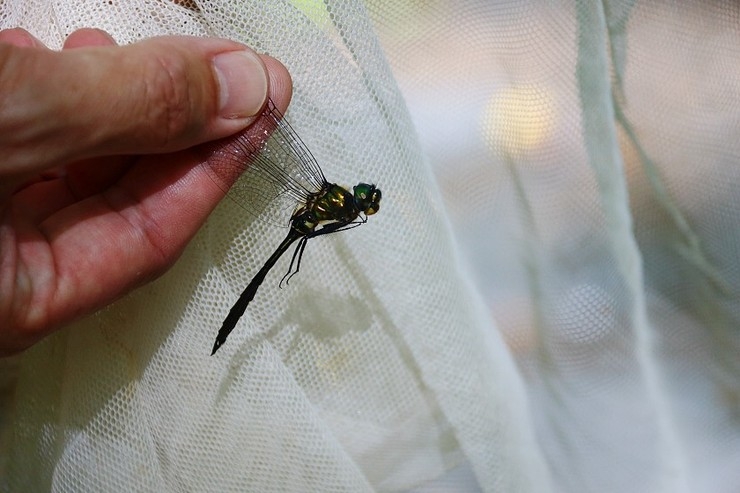
Delicately gripping a large dragonfly
Throughout our walk we could hear the sound of birds singing around us, but even with our borrowed binoculars the thick summer foliage made them difficult to spot. I was eventually able to snap a hiyodori (brown-eared bulbul) as it alighted briefly on a nearby branch, and our guide was able to identify an especially melodius voice as belonging to a kibitaki (narcissus flycatcher).
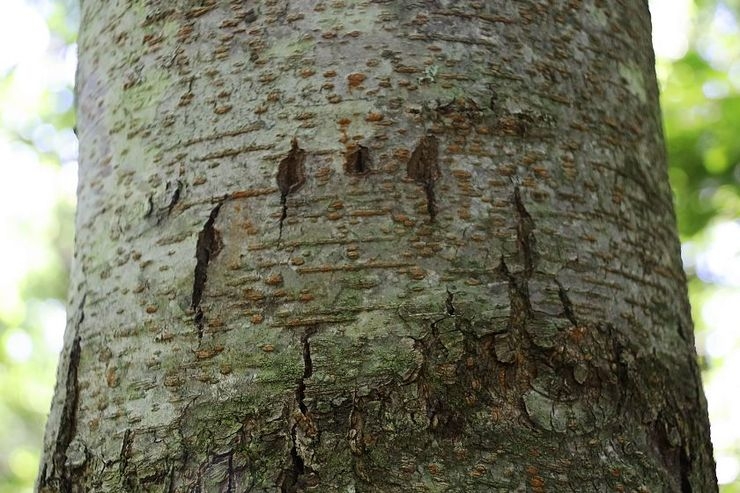
A hiyodori (brown-eared bulbul)
While not lucky enough to spot any larger animals, we were able to find trails in the undergrowth, serow prints and claw marks in the bark of a tree climbed by a small bear.
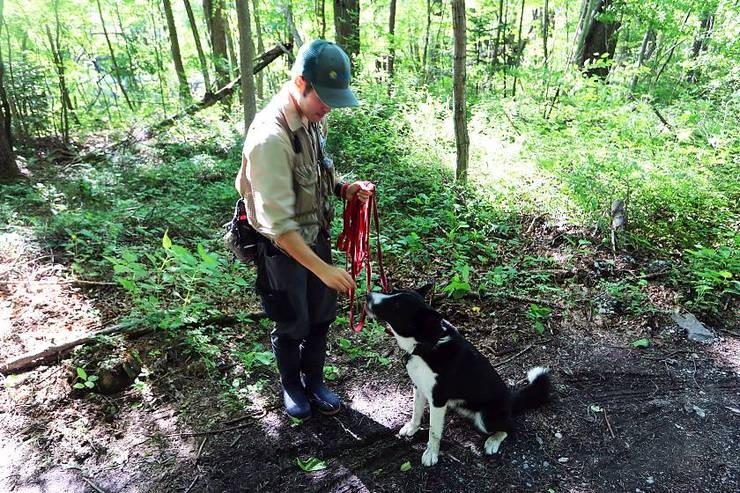
Bear claw marks on an uwamizuzakura (Japanese bird cherry) tree
One last and quite unexpected highlight of the first tour was bumping into Elf, a gorgeous two-year-old karelian mountain dog, one of several kept by Picchio to assist in tracking bears, alerting staff to their presence or if necessary frightening them away from paths open to members of the public.
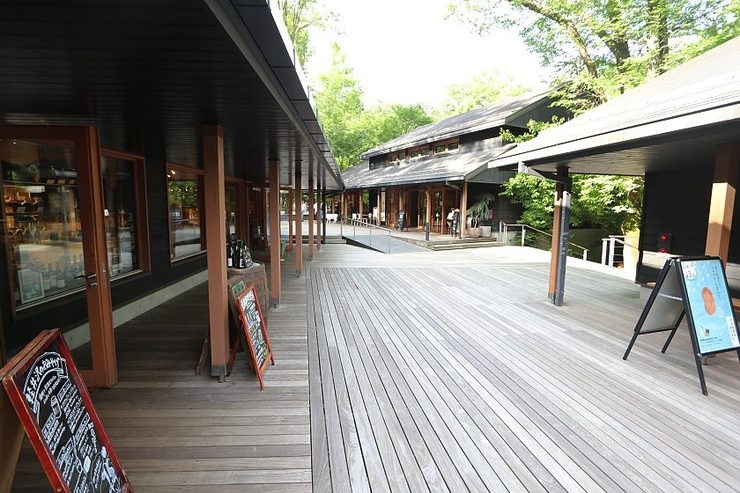
Elf with his handler, Imura-san
With a couple of hours to kill before the start of my second tour, I made my way along a wooded path to the nearby Harunire Terrace - an attractive row of modern lodge-style buildings housing cafes, bakeries and souvenir shops set alongside the Yu River. Here I enjoyed a very tasty cup of coffee and took a few moments to appreciate my beautiful forest surroundings.
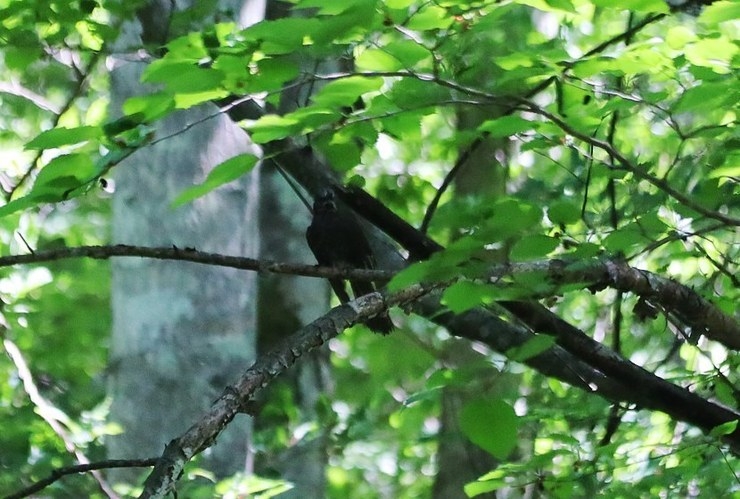
Harunire Terrace
With the light beginning to wane, I made my way back to the Bird Sanctuary for my second tour - this time to catch a glimpse of one of the sanctuary's most unusual inhabitants - the musasabi or giant flying squirrel.
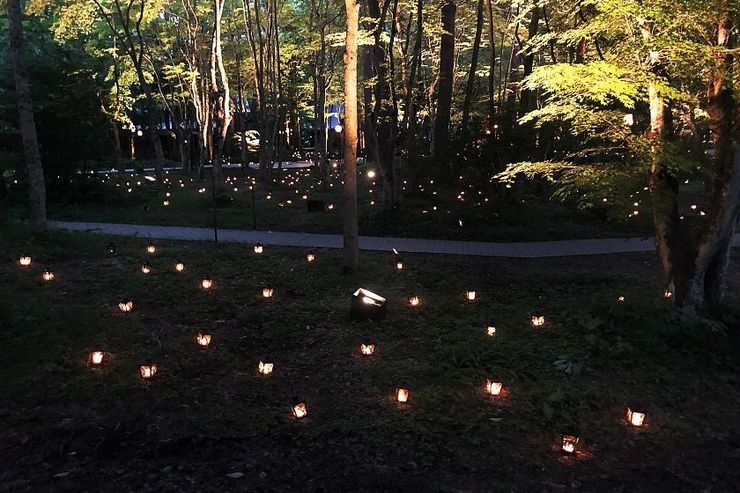
Karuizawa after dark
Measuring around 80cm from nose to tail, these amazing creatures are equipped with a wing-like web of skin from their fore to rear legs, allowing them to glide through the air like little parachutes. While it is usual for them to travel a distance equal to two thirds the height of their starting point, some have been known to travel further, with the record standing at an incredible 160 meters!
With the musasabi only emerging from their nests to forage around 30 minutes after sunset, we waited until just before last light before setting out with our guide to an area near a local resort hotel where a box had been placed for them, designed to mimic their natural nesting sites in tree hollows. As we quietly approached the box, our guide produced a portable monitor and connected it to a camera mounted inside the nest, revealing one of the creatures curled into a ball, just beginning to stir as the darkness set in.
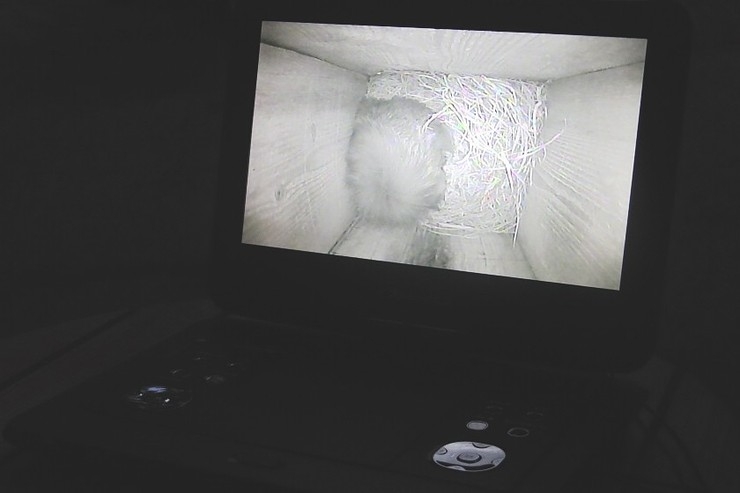
A hidden camera captures the musasabi inside the nesting box
Over the next few minutes, the solitary musasabi gradually uncurled and began to groom itself, before showing just enough of its striped face to peep through the opening, a step it cautiously repeated several times. When it finally emerged, it paused on the roof of the box for just a moment before darting to the treetop, almost too fast to see, before extending its wings and swooping into the darkness. The movement lasted just two or three extraordinary seconds before the creature disappeared into the darkness.
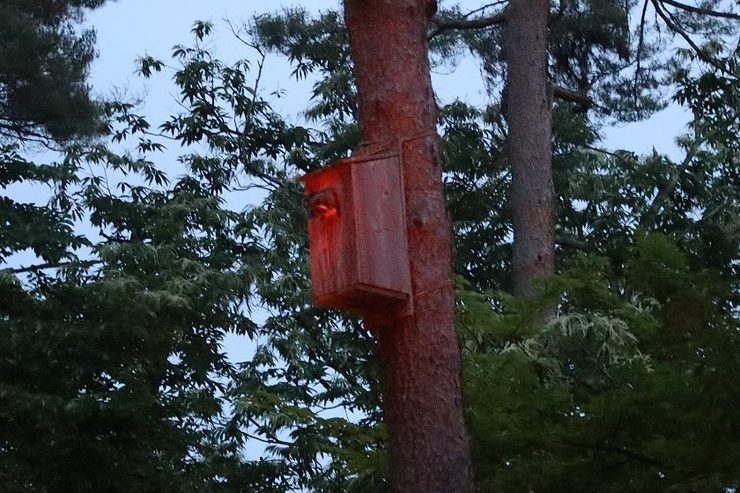
The musasabi peeps through the opening
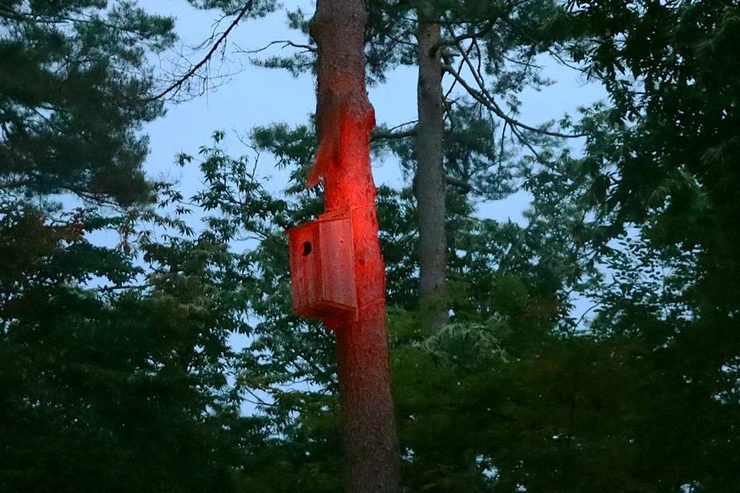
A glimpse of the musasabi as it darts up the tree
